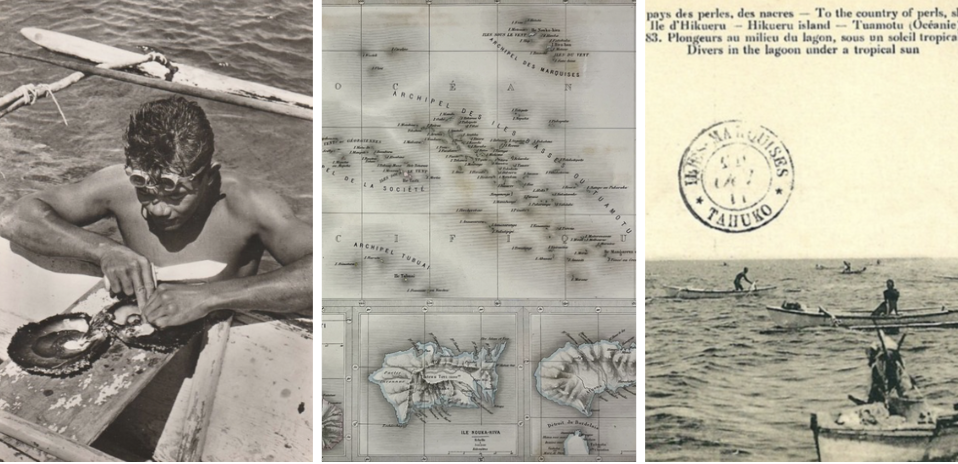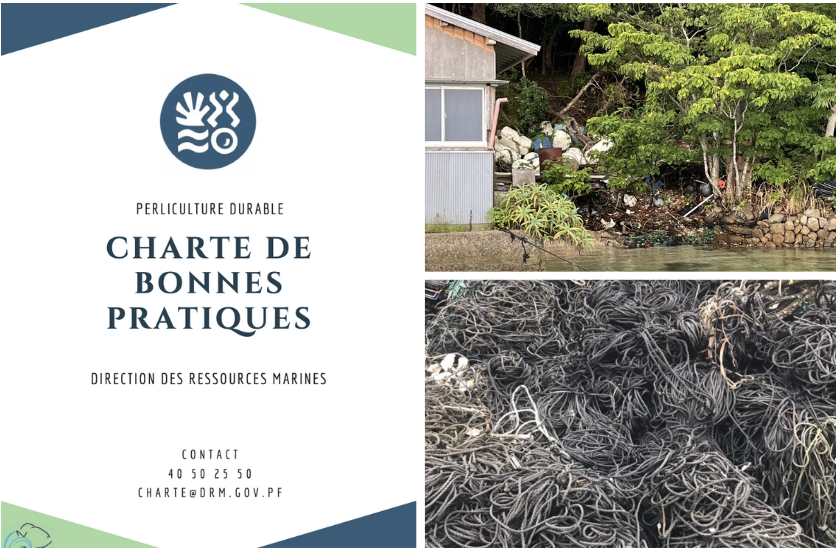Exploring the World of Tahitian Pearls
Welcome to Onegemme! This first article focuses on pearls and pearl farming in French Polynesia. We provide you with an overview from an origin, impact and quality standpoint. This is not meant to be an exhaustive or scientific report but rather an invitation to dive with us into the journey of the pearls we select for you.
ORIGIN – FRENCH POLYNESIA

French Polynesia comprises 121 islands and atolls stretching over 2.5 million km2 in the middle of the Pacific Ocean. Pearl production using the Pinctada margaritifera started in the 1970s, but pearl oyster fishing was documented as early as 1912. Nowadays, Tahitian Black Pearl production ranks as the second-largest revenue generator after tourism for a population of 300,000. Exports of Tahitian pearls have oscillated between 9 and 15 tons per year for the past 20 years.
Baby oysters are either collected or spawned in hatcheries before they are grown until adulthood and hanged on long lines in lagoons. The fisheries department defines collecting quotas and maximum oyster density to ensure responsible use of natural resources. Expert technicians perform seeding or nucleation on-site.
Pearls are generally harvested 2 years after seeding and come in similar shape, size and quality as South Sea pearls. Tahitian pearls are renowned for their unique colours, ranging from dark grey to amazing peacock shades, and command an average price between Akoya and South Sea Pearls.
Tuamotu, Iles sous le vent, and Gambier are the main archipelagos where oysters and pearls are grown. Each production area offers distinct characteristics reflected in the quality of the pearls harvested. Rikitea, for example, is known for its pearls' unique and vibrant colour range. This Island is often home to the elusive peacock, sought-after aubergine, and green shades.
At Onegemme, we curate single-origin cultured and natural pearls from all over the world. Pearl harvest are often mixed and consolidated to increase matching opportunities, but the story behind them is lost as they change hands. We curate single-origin loose pearls, matching, and strands whose details can be uploaded to the provenance proof blockchain platform and passed on for generations.
IMPACT – ISOLATION AND WASTE MANAGEMENT

In French Polynesia, oyster collecting and pearl farming largely contributed to the settled population in remote islands and atolls, but isolation makes transport and logistics footprint significant. Most farms are operated in semi-enclosed lagoons, making access to nutrients challenging and oyster density a critical success factor. Baby oysters (or spats) collection and hatchery are both used to produce oysters and grow pearls.
The role of local government and fisheries in promoting and managing resources has evolved significantly over time and now focuses on marine conservation, restoration, and social welfare. The most notable recent initiatives are the promotion of a voluntary code of practice (Perliculture Durable—La Charte des Bonnes Pratiques) and a waste management and disposal policy to alleviate the impact of microplastics on ecosystems.
Pearl farming gears, mostly ropes and nets used to hold oysters, are currently made of plastics, which can release chemicals (leachates) and deteriorate into microplastics as they age. Responsible farmers select and maintain durable equipment whilst manufacturers explore alternative materials. Proper storage, recycling, and disposal of unused equipment are also critical to minimising pearl farming’s impact.
At Onegemme, we support our suppliers on their Environmental, Social and Governance (ESG) journeys. One per cent of Onegemme sales proceeds are directed to pearl related research programs. Until a global impact certification framework is in place, we acknowledge our suppliers based on the regulatory environment they operate within, their commitments and how they assess their impact.
AWARE: Pearlers and pearl farmers who took steps to self-assess their social and environmental impact. They usually operate under an internal quality and productivity-driven code of practice.
ENGAGED: Pearlers and pearl farmers who are taking action to improve their social and environmental impact. They typically operate under a sector code of practice and/ or run sustainability projects.
CERTIFIED: Pearlers and pearl farmers who commit to impact measurable targets assessed by a 3rd party. They typically operate under a global code of conduct and subject themselves to regular audits.
QUALITY – FOCUS ON SHAPE

Quality attributes are sometimes split between objective and subjective value contributors. In its Guide for Classifying Natural Pearls and Cultured Pearls, the World Jewellery Confederation (CIBJO) distinguishes symmetrical (round, drop, button… etc.) and asymmetrical shapes (Baroques, Keshis… etc.).
Most pearl farmers aim for spherical shapes, as they command a higher price. Symmetrical shapes require regular nacre deposition, which may result in a better lustre. However, they can also simplify manufacturing by using standard settings.
Designers’ and consumers’ preference for unique creations can also drive the value of irregular shapes very high. La Peregrina, one of the most valuable natural pearls, is a perfect drop. The relative rarity of drop shapes makes matching them challenging, which can significantly increase their value.
Pearlers and traders developed grading systems specific to the type of pearl they harvest and sell. At Onegemme, we describe our pearls using a universal classification system derived from the Gemological Institute of America (GIA) 7 Pearl Value Factors and the CIBJO pearl guide. We use a simplified grade system that combines lustre, surface and nacre criteria. Gems are collectors' items. Fine-grade pearls suite "haute" jewellery and one-of-a-kind creations. Jewellery-grade pearls are best for repeat designs and strands.
Sunday
Monday
Tuesday
Wednesday
Thursday
Friday
Saturday
January
February
March
April
May
June
July
August
September
October
November
December


